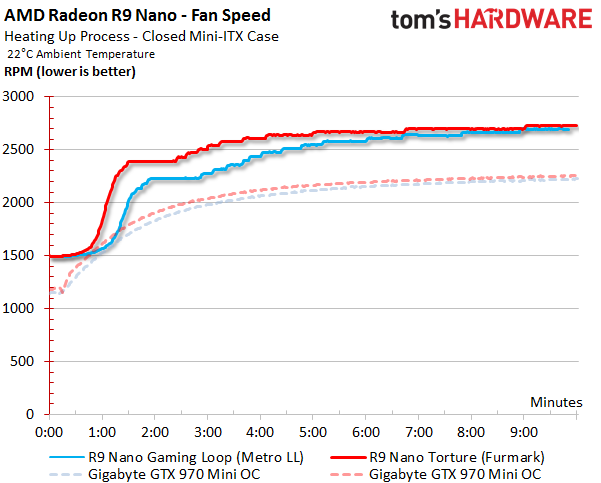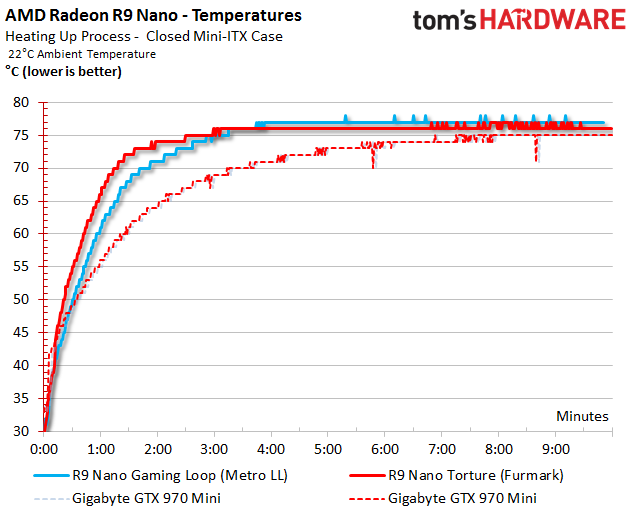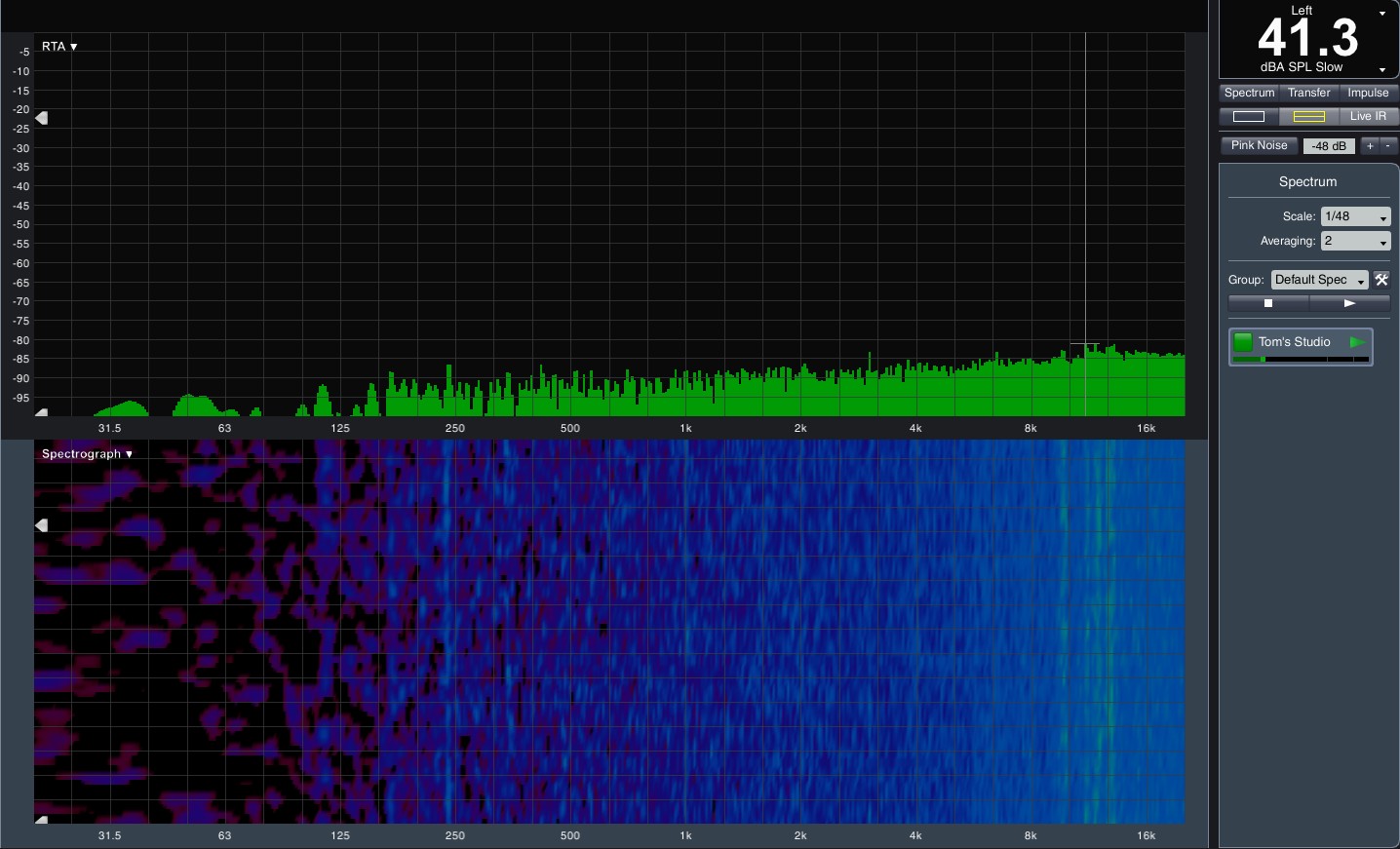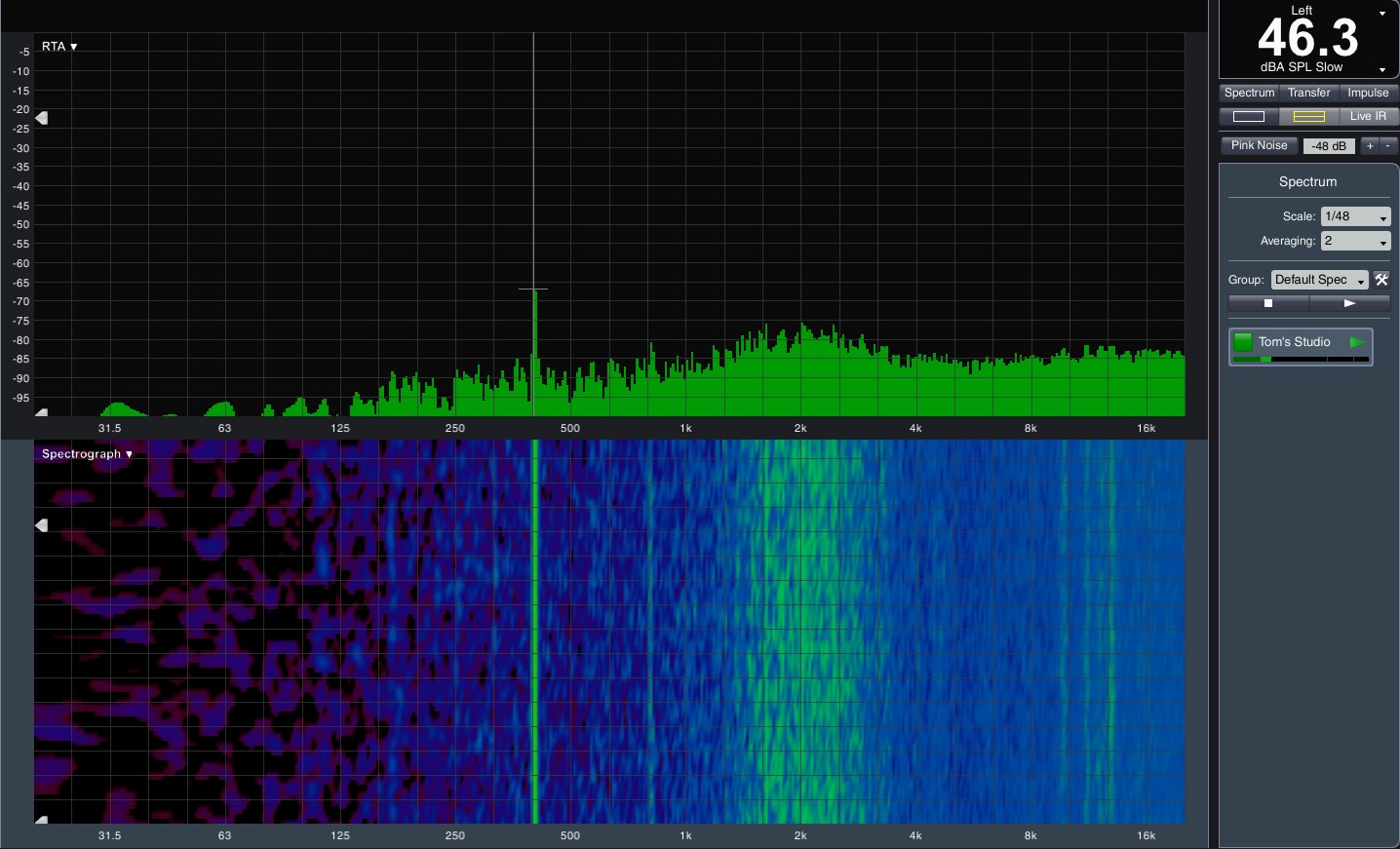AMD Radeon R9 Nano Review
Small, fast and pricey — that’s how AMD wants to establish a whole new product category. But does the Radeon R9 Nano have the performance to back up its price tag?
Results: Fan RPM And Noise
Fan Control and RPM
AMD is using a single high-RPM fan with nine thin rotor blades in the Radeon R9 Nano’s cooler. The blades are twisted toward the inside of the fan and turn at a maximum speed of 7000 RPM. For comparison, the Gigabyte GTX 970 Mini’s fan tops out at 3500 RPM. It has 11 rotor blades with a better geometric design. Consequently, it's less noisy.
We’ve added the temperature curve to the graph to make it easier to put these results into their proper context.
On average, the AMD cooler’s fan spins 500 RPM faster than Nvidia's. Then again, it also has to deal with 30W of additional waste heat.
Looking at the graphs, what jumps out immediately are the different shapes of the fan curves. AMD takes things slow, whereas Nvidia uses a more classic curve. AMD’s fan ramps up gradually until approximately 65 degrees Celsius. From there to approximately 72 degrees Celsius, it really gets going. We're reminded of prior implementations starting at 75 degrees Celsius.
Noise
Just like we did for the infrared measurements, we had to get creative in order to achieve good noise results. We recorded the fan speed, and then manually set the graphics card to this speed in our test room in order to measure the noise level of just the graphics card itself.
As usual, the fans are the worst offenders when it comes to noise. Unfortunately, the coils are doing their part as well, though. As long as the fan speed stays under 1500 RPM or so, AMD’s marketing slogan of “library” noise levels applies. It’s just too bad that there’s some very pronounced peaks to be seen on the spectrogram between 8 and 14kHz, which can't be ignored.
Once AMD’s graphics card hits 2600 RPM, the fan’s air turbulence and rotor noises drown out almost all of the coil whining.
Get Tom's Hardware's best news and in-depth reviews, straight to your inbox.
From a distance of 50cm, we measured just under 46 dB(A) with our calibrated microphone. This is certainly well above what AMD would like you to believe according to its marketing materials, but it’s also a lot lower than some of the company's previous efforts. Remember uber mode?
Overall, this is certainly a respectable result. The way that the Radeon R9 Nano squeezes into our tiny case, 180W of waste heat can’t really be dealt with any better using air cooling. The Gigabyte GTX 970 Mini might operate at a somewhat lower noise level, 39.9 dB(A) and 42.3 dB(A) under full load, but the comparison isn't even close to fair given the performance discrepancy between them.
| Ambient Temperature22 °C | Open Measurementat Full Load(Fixed RPM) | Measurement ofComplete System at Maximum Load | Open Measurementat Idle(Graphics Card Only) |
|---|---|---|---|
| AMD Radeon R9 Nano | 46.3 dB(A) | 43.7 dB(A) | 32.3 dB(A) |
| Gigabyte GTX 970 Mini | 42.3 dB(A) | 39.7 dB(A) | 31.9 dB(A) |
Current page: Results: Fan RPM And Noise
Prev Page Results: Frequencies And Temperatures Next Page Conclusion
Igor Wallossek wrote a wide variety of hardware articles for Tom's Hardware, with a strong focus on technical analysis and in-depth reviews. His contributions have spanned a broad spectrum of PC components, including GPUs, CPUs, workstations, and PC builds. His insightful articles provide readers with detailed knowledge to make informed decisions in the ever-evolving tech landscape
-
Eximo Looks like the table had a hiccup. GTX970 (OC) is showing a lot of the numbers from the R9-390X, and maybe a few numbers from the 980 column.Reply -
-Fran- It is a nice card and I agree, but... It's not USD $650 nice.Reply
This card is a very tough sell for AMD, specially since ITX cases that can house current long cards are not hard to find or weird enough to make short cards a thing.
It's nice to see it's up there with the GTX970 in terms of efficiency, since HTPCs need that to be viable and the card has no apparent shortcomings from what I could read here.
All in all, it needs to drop a bit in price. It's not "650 nice", but making it "~500 nice" sounds way better. Specially when the 970 mini is at 400.
Cheers! -
sna no HDMI2.0 in itx small system near the 4k TV is unforgivable AMD , what were you thinking?Reply -
sna Reply16605176 said:It is a nice card and I agree, but... It's not USD $650 nice.
This card is a very tough sell for AMD, specially since ITX cases that can house current long cards are not hard to find or weird enough to make short cards a thing.
It's nice to see it's up there with the GTX970 in terms of efficiency, since HTPCs need that to be viable and the card has no apparent shortcomings from what I could read here.
All in all, it needs to drop a bit in price. It's not "650 nice", but making it "~500 nice" sounds way better. Specially when the 970 mini is at 400.
Cheers!
well this card is for the smallest case ... not the easy to find huge long itx case.
I personaly find long itx cases useless ... they are very near to Matx case in size .. and people will pick up MATX ovet ITX any time if the size is the same.
BUT for 170mm long card ? this is a winner.
the only thing killing this product is the lack of HDMI2.0 which is very important for itx .. ITX are the console like PC near the tv.
-
heffeque Replyno HDMI2.0 in itx small system near the 4k TV is unforgivable AMD , what were you thinking?
I guess that they were thinking about DisplayPort? -
Nossy I'd go with the 950 GTX for a mini ITX build for a 1080pgaming/4k video HTPC.Reply
For a $650 bucks video card. I'd go with a 980TI and use a Raven RVZ01 if I want an ITX build with performance.



